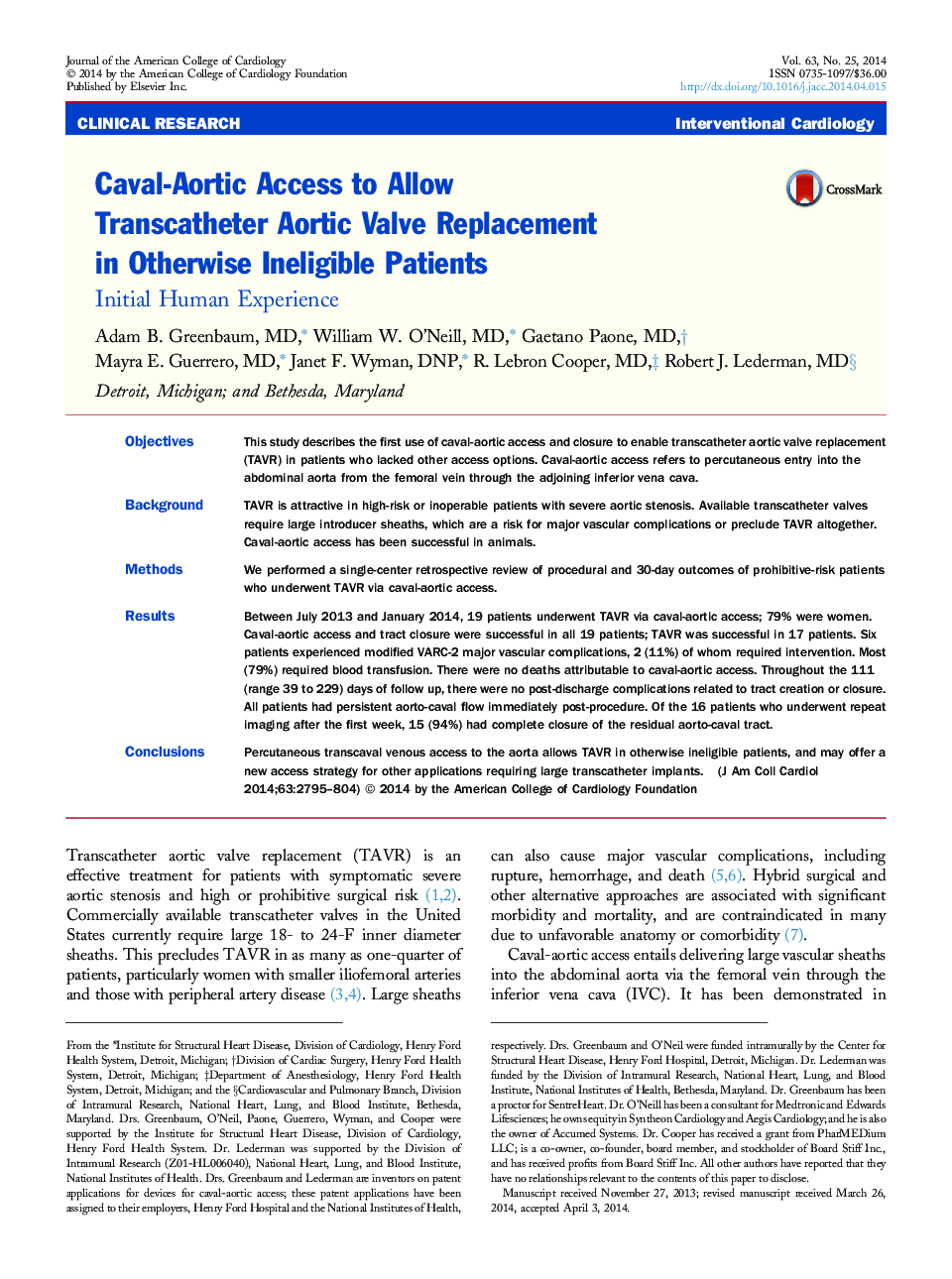| Article ID | Journal | Published Year | Pages | File Type |
|---|---|---|---|---|
| 2944048 | Journal of the American College of Cardiology | 2014 | 10 Pages |
ObjectivesThis study describes the first use of caval-aortic access and closure to enable transcatheter aortic valve replacement (TAVR) in patients who lacked other access options. Caval-aortic access refers to percutaneous entry into the abdominal aorta from the femoral vein through the adjoining inferior vena cava.BackgroundTAVR is attractive in high-risk or inoperable patients with severe aortic stenosis. Available transcatheter valves require large introducer sheaths, which are a risk for major vascular complications or preclude TAVR altogether. Caval-aortic access has been successful in animals.MethodsWe performed a single-center retrospective review of procedural and 30-day outcomes of prohibitive-risk patients who underwent TAVR via caval-aortic access.ResultsBetween July 2013 and January 2014, 19 patients underwent TAVR via caval-aortic access; 79% were women. Caval-aortic access and tract closure were successful in all 19 patients; TAVR was successful in 17 patients. Six patients experienced modified VARC-2 major vascular complications, 2 (11%) of whom required intervention. Most (79%) required blood transfusion. There were no deaths attributable to caval-aortic access. Throughout the 111 (range 39 to 229) days of follow up, there were no post-discharge complications related to tract creation or closure. All patients had persistent aorto-caval flow immediately post-procedure. Of the 16 patients who underwent repeat imaging after the first week, 15 (94%) had complete closure of the residual aorto-caval tract.ConclusionsPercutaneous transcaval venous access to the aorta allows TAVR in otherwise ineligible patients, and may offer a new access strategy for other applications requiring large transcatheter implants.
